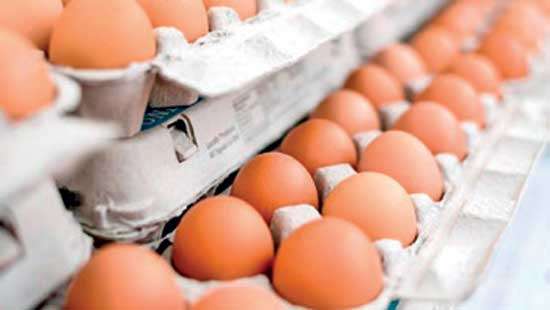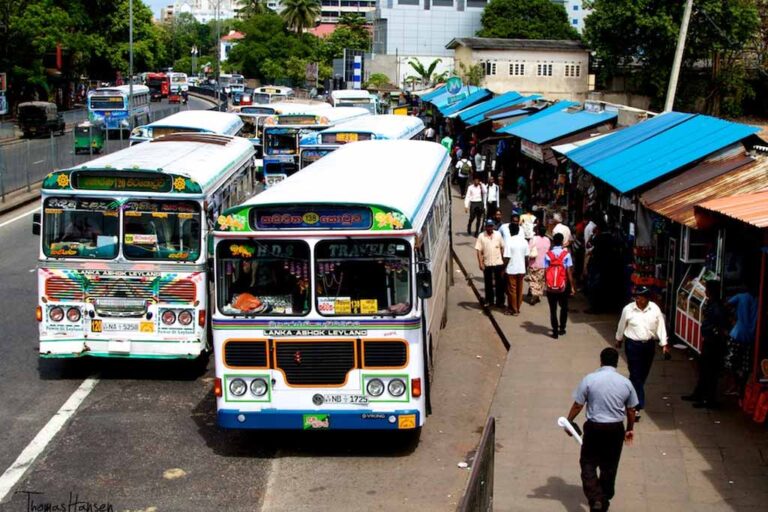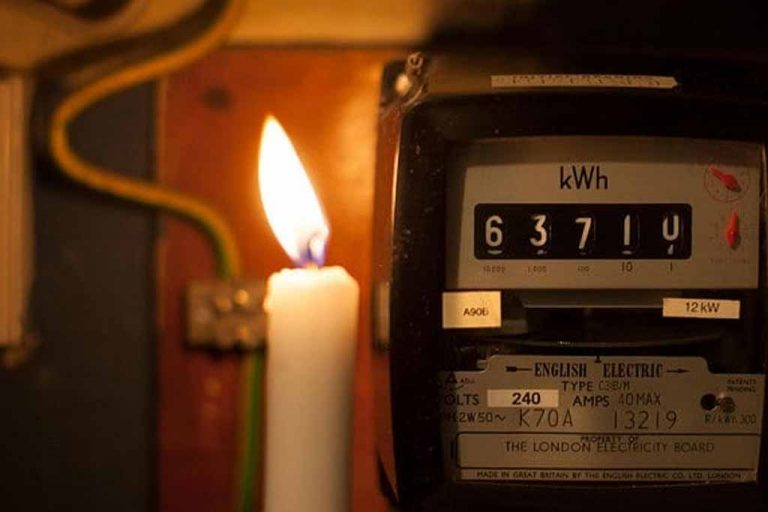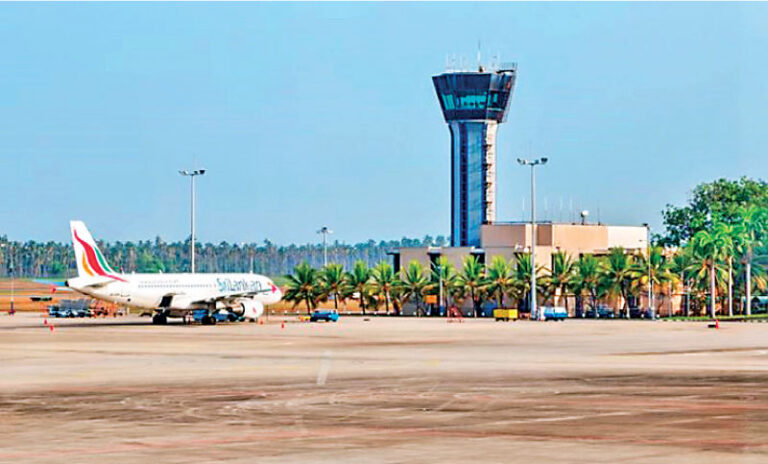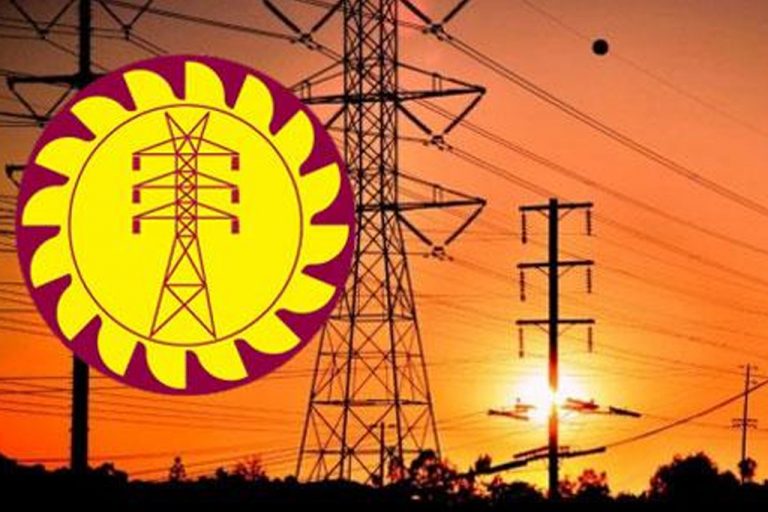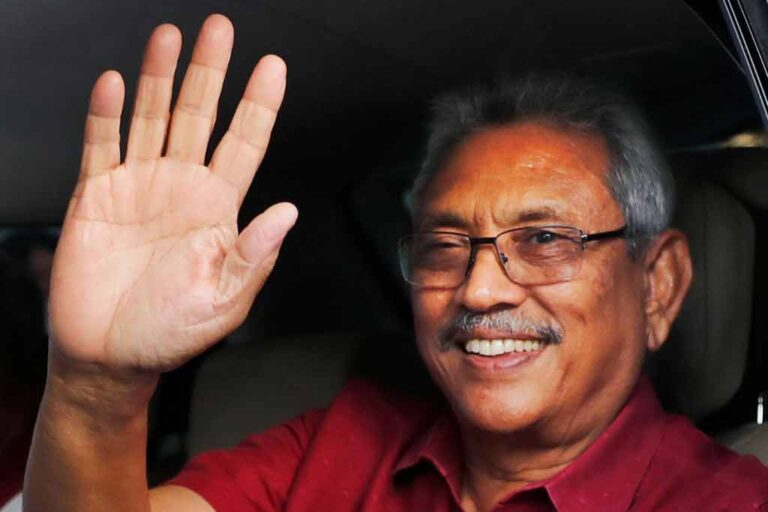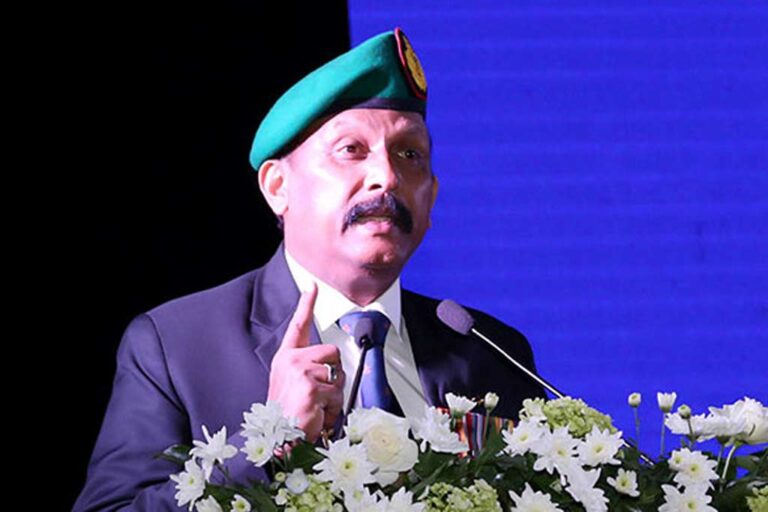The Sri Lankan poultry industry expects a 20% drop in production this year as high feed costs hit farms. Ussec Sri Lankan Consultant Athula Mahagamage said the layer industry is feeling the most impact, with many farms shutting.
The chicken meat production has collapsed 30 percent and egg output 40 percent as a currency collapse pushed up costs feed imports were blocked by foreign exchange shortages, an industry official said.
Prices of chicken and eggs have risen in Sri Lanka due to a surplus demand in the market and further price hikes are expected due to a shortage in animal feed, the All Island Poultry Industry Association said.
Ajith Gunasekera, the associationpresident said that the price of an egg has increased to around 62-70 rupees and the price of a one kilogram of frozen chicken has increased to around 1,700 rupees
Gunasekara attributed the price hike to a dearth of animal feed that has made it difficult for the poultry industry to maintain animal stocks in farms, mainly in the SME sector.
“Small and medium farmers are leaving the business due to feed shortages and because big poultry companies are stopping buy back schemes,” he said .
Broiler meat output has fallen 30 percent to 12,000 metric tonnes a month from 18,000 metric and prices have shot up, he said.
As Sri Lanka needs 40 million US dollars a month to import animal products, the country should focus on local production of substitutes to minimise the cost and secure a continuous supply, the All Island Poultry Association said.
Association President Ajith Gunasekera said that with egg and chicken suppliers leaving the market due to lack of animal feed, Sri Lanka is facing issues in supplying eggs and chicken to the local market and the tourism sector which is expected to boom from the third quarter of 2022.
Before the contraction, the poultry industry was able to produce 216,000 MT of chicken and 26.5 billion MT of eggs a year.
However, with the fertilizer ban in 2021 resulting in a drop in crops, the production of maize, an essential raw material for animal feed, dropped.
With the forex issue emerging in March 2022 followed by the Central Bank of Sri Lanka (CBSL) floating the rupee, Sri Lanka put heavy restrictions on imports, resulting in the industry being unable to import animal feed, supplements and medicine.
As a result, local production dropped significantly, resulting in a rapid increase in prices due to high demand.
Gunesekara said the industry is concerned about meeting a possible rise in demand in the coming weeks with more restaurants and hotels mainly in urban areas restarting their business with the anticipated increase in tourist arrivals.
SL poultry industry urges Govt to stop egg imports to tackle shortage
Private buses to operate from today for schoolers
About 90 per cent of the private buses will operate island wide from today (15), revealed President of the Ceylon Private Bus Owners Association Gemunu Wijeratne speaking to media yesterday (14).
“Arrangements in particular have been made to start schools from Monday on all five days of the week. We are planning to run 100 per cent buses on Monday, at least 90 per cent. Also, school buses have been deployed in the Western Province. We are working to start the school bus service in other areas at the time of starting and ending of schools under regular fares on the routes. So, we think that we have the capacity to restore the private bus service and public passenger service from Monday,” he said.
MIAP
Daily power cuts reveal slight increase
A power cut of one hour and twenty minutes will occur today (15) and tomorrow (16) revealed the Public Utilities Commission of Sri Lanka (PUCSL).
Accordingly, the daily power cut of one hour has been extended up to twenty more minutes.

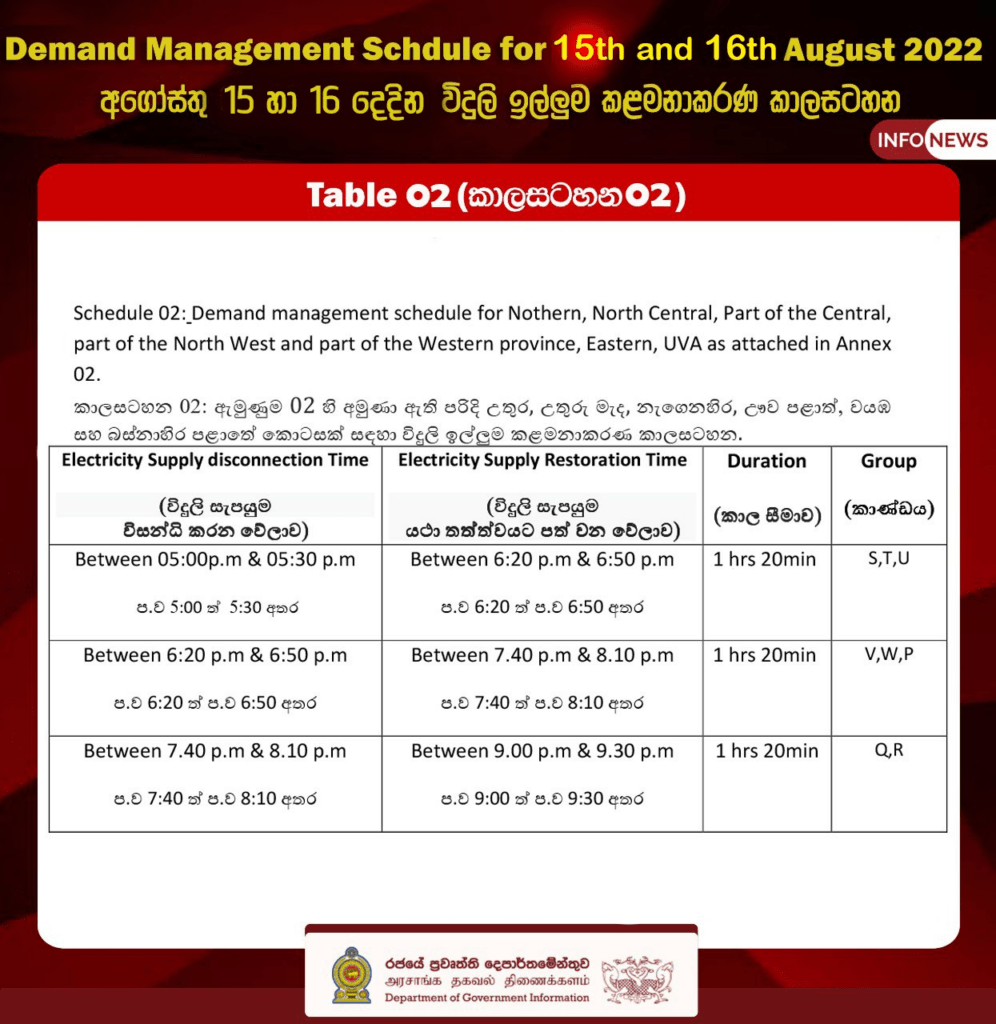
MIAP
Govt. issues stringent guidelines to curtail public-sector expenditure
Public sector officials have been advised to strictly adhere to a Treasury circular on limiting government expenses, and warned that those failing to follow the directive would be personally held liable.
On the instructions of President Ranil Wickremesinghe, the directive has gone out from Presidential Secretary Saman Ekanayake to ministry secretaries, department heads, provincial chief secretaries, heads of corporations, statutory boards and state-owned enterprises.
They have been told to curtail state expenses due to the current economic challenges the government faces.
It has been revealed that the directive comes in the wake of two provincial administrations planning to recruit 600 persons for new jobs, despite the directive to stop recruitment.
The circular on specific guidelines has been issued by Treasury Secretary K.M. Mahinda Siriwardana. The circular said the guidelines were issued in view of the “serious issues in the government fiscal operations and insufficient foreign exchange to finance essential imports and meet foreign debt service obligations.”
Accordingly, strictly control has been placed on the usage of utility services including fuel, electricity, water and communication facilities.
Entering into new rent or lease agreements with regard to new buildings is suspended until further notice while existing agreements can be extended based on a proper need assessment and a cost-benefit analysis with the approval of the board of directors of the respective institutions.
Prior approval from the General Treasury is a must before extending a lease or replacing existing agreements for vehicles while entering into fresh agreements to lease vehicles is suspended, the circular added.
The circular stressed that recruitment should be suspended immediately, and if there is recruitment necessary to maintain business continuity, it must have the approval of the Director General of the Department of Public Enterprises or the Director General of the Department of National Budget, but there should be no new allowances paid to employees, and the board should ensure that existing allowance schemes are not increased either.
All institutions are instructed to shift to electronic communication platforms and reduce paper usage as much as possible.
In addition, state-owned enterprises (SOEs) are directed to avoid expenditure-related ceremonials and to suspend all sponsorships, donations, Corporate Social Responsibility (CSR) expenses, and non-business-related promotional expenditures. Any such expenditure which is essential in nature can only be met with the approval of the relevant minister and concurrence of the Minister of Finance, the circular said.
Although foreign-funded training programmes are not restricted, domestic funds could not be used for foreign travel or training programmes, the circular said.
The government also encouraged SOEs to use underutilised or unused lands for agricultural purposes with in-house labour and inputs to ensure sustainable food security in the country by coming up with innovative approaches to producing value-added products focusing on alternative arrangements to imports.
A high-level Management Committee consisting of a Chief Executive Officer, Head of Finance, Head of Operations and Head of Human Resources is to be established in every institution to introduce effective controls over expenditure and monitoring purposes.
The committee is to report its recommendations to the board of directors at the end of each month and key initiatives accepted by the board based on those recommendations should be communicated to the secretary to the line ministry and the General Treasury on or before the tenth of the succeeding month through emails.
Taisei seeks halt to BIA expansion contract
Japanese engineering group Taisei will enter negotiations on a possible stoppage of an airport expansion in Sri Lanka after funding for the project was cut off, another sign of the country’s deepening economic crisis.
Taisei in 2020 won a 62 billion yen ($ 464 million at current rates) contract to build a new multilevel terminal and viaduct at Bandaranaike International Airport near Colombo, Sri Lanka’s largest city. It had expected to complete construction around 2023.
But the Japan International Cooperation Agency recently suspended over 70 billion yen of lending to Airport and Aviation Services (Sri Lanka), the State airport operator, which would have paid for the project.
Taisei will start talks with Airport and Aviation Services to suspend the project, and could request a release from its contract as early as the fall if the funding situation and other factors do not improve.
Sri Lanka’s tourism industry was ravaged by the coronavirus pandemic, which in turn squeezed its foreign-exchange reserves. Combined with years of current-account deficits, the Sri Lankan Finance Ministry in April announced that it would stop foreign debt repayments until it can chart a path out of the crisis.
A Sri Lankan Cabinet Member had recently announced a halt in multiple JICA-funded projects, local media reported.
Former President Gotabaya Rajapaksa, whose family has been a dominant political dynasty in Sri Lanka for decades, fled the country in July amid protests over inflation and other economic difficulties. New President Ranil Wickremesinghe aims to restart bailout talks with the International Monetary Fund and seek aid from other international partners.
The Sri Lankan airport project is believed to account for tens of billions of yen of Taisei’s 221.5 billion yen nonconsolidated overseas balance carried forward, a measure of the scale of outstanding projects, as of the end of March.
“We decline to comment on the progress of individual projects,” a Taisei spokesperson told Nikkei.
A JICA spokesperson said the agency “cannot provide information regarding our borrowers”.
There were 180 Japanese companies operating in Sri Lanka as of July, according to research company Teikoku Databank. Although the impact from Sri Lanka’s crisis has been limited so far “protracted uncertainties in the business environment caused by political instability could affect companies’ strategies,” Teikoku said in a report.
Public Administration and Home Affairs Ministry issues announcement on non-essential public servants
The circular issued limiting the summoning of non-essential public servants to their offices is valid till August 24, the Ministry of Public Administration and Home Affairs said.
The circular was issued in response to the fuel crisis, effective from July 24.
However, the institutional heads have been instructed to call the necessary officials in to the offices to run the operations at the public institutions without interruption given that the shortage of fuel has largely been solved, the Ministry noted.
MIAP
Namal lodges complaint demanding probe into news item on Mawbima
Former Sports Minister Namal Rajapaksa has lodged a complaint with the Police demanding an investigation into a news item published on Mawbima Newspaper.
The news item was regarding Commonwealth Games winner Nethmi Ahimsa being brought to visit the former Minister.
It is noteworthy that the owner of Mawbima is the current Public Security Minister Tiran Alles, who is a family friend of the Rajapaksas and a National List MP of the Sri Lanka Podujana Peramuna (SLPP).
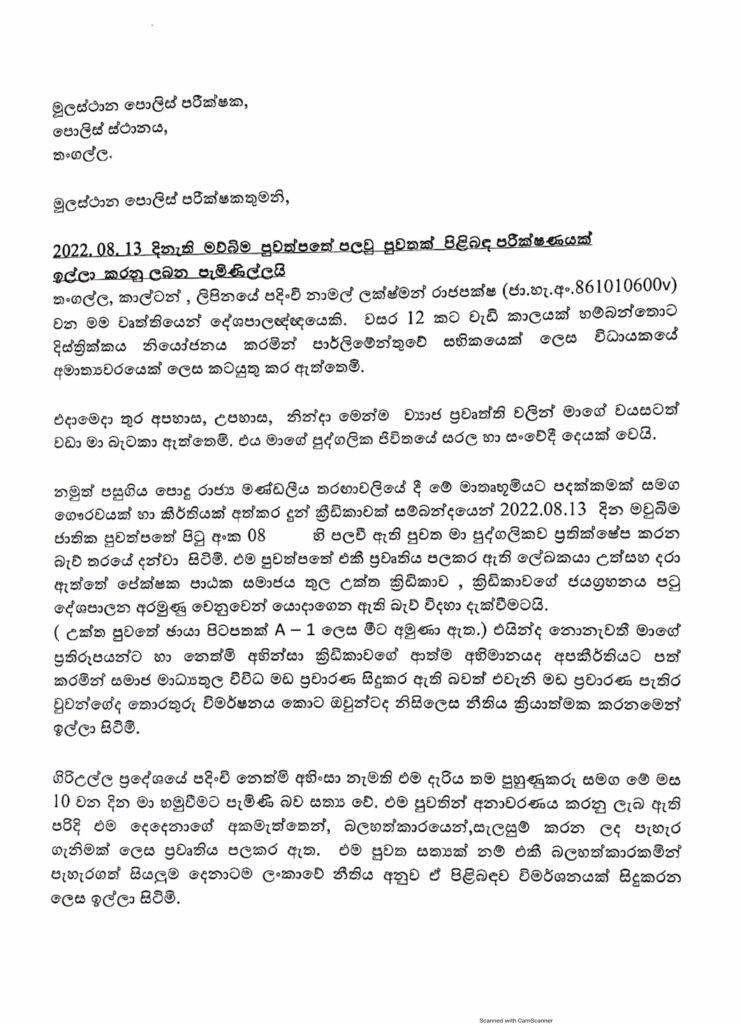
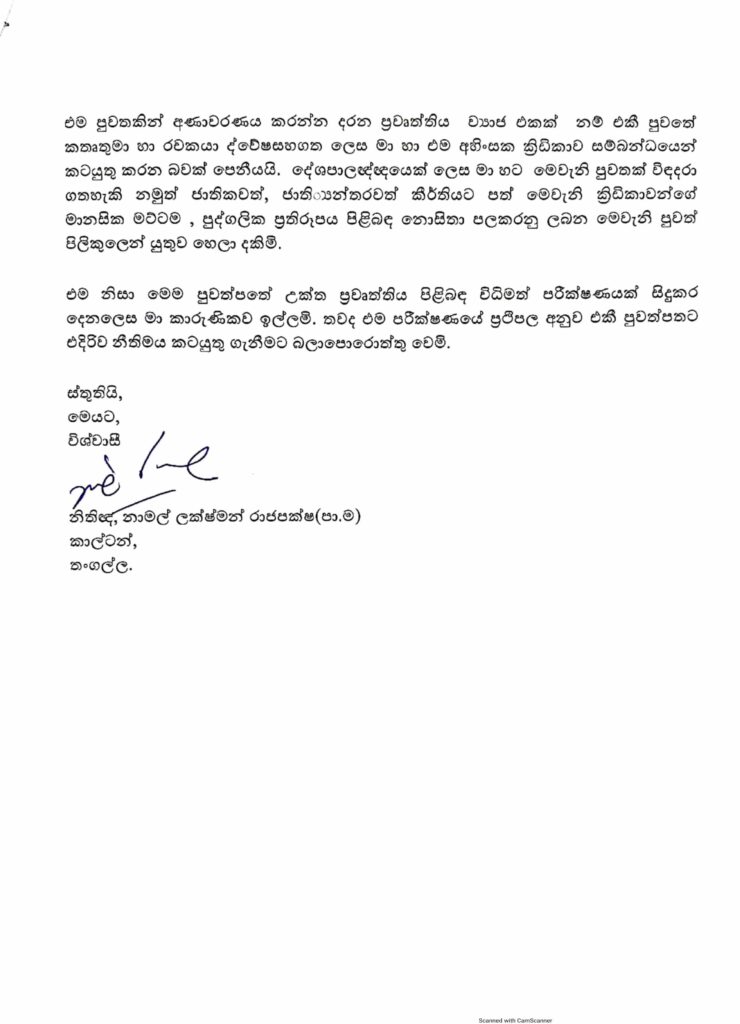
MIAP
Revision on electricity tariffs problematic: CEB
The revision on electricity tariffs declared by the Public Utilities Commission of Sri Lanka (PUCSL) is problematic, said the Ceylon Electricity Board (CEB).
Despite the electricity tariffs being surged by 75 per cent the Board continues to incur a loss of about Rs. 45 billion, revealed Deputy General Manager of Corporate Strategy and Regulatory Affairs of the CEB Nihal Weeraratne.
He added that the CEB alone has the right to make decisions regarding the annual benefits and allowances of its employees and not the PUCSL.
The Deputy General Manager recently said in a television programme that the PUCSL will be informed about the issues in the new tariffs system in writing.
MIAP
Former President Rajapaksa to return to SL on Aug 20
Former President Gotabaya Rajapaksa who according to foreign reports is currently in Bangkok, Thailand is expected to return to Sri Lanka on August 20, political sources disclosed.
The ousted Sri Lankan head of state is expected to return to the island on a private jet, following concerns on his safety due to which security officials were deployed outside the hotel he was residing.
Meanwhile, the question of who paid off the private jets utilised by the former President is currently among the hot topics on the political arena, and even a group of lawyers are preparing to question the government in this regard, sources added.
Govt lifts ban on a number of international Tamil organisations and individuals
The government has lifted a ban imposed on a number of Tamil organisations and individuals, the Defence Ministry said in a statement.
The ban, based on terrorist or other allegations levelled on six Tamil organisations and 309 individuals, accordingly will be lifted.



MIAP

